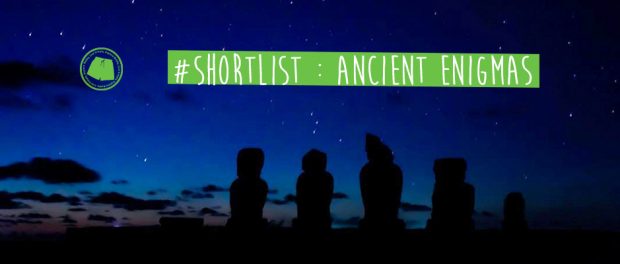#ShortList : Ancient Enigmas
If the rocks could talk, then we wouldn’t wonder so much about the past, they could answer all of our questions. But the fact of the matter is that so many questions remain, even with our modern technology and researchers out in the field furiously trying to piece together all the pieces of the puzzle. But isn’t that the beauty of the human species? We can still amaze future generations and remain as ancient enigmas of the past.
Plain of Jars, Phonsavan, Laos
Hundreds of stone jars are scattered across the plains of Phonsavan in Laos. Mythology tells of an ancient giant people who carved the jars directly from the mountains (which were several hundred kilometers away) to store their moonshine brew, known today as Lao Lao. Modern researchers suggest that the stone jars, which are larger than a fully grown man in many cases, were used as funerary urns. What do you think?
Disquis Spheres, Costa Rica
These perfectly spherical stones are found throughout the Dísquis Delta and are made of volcanic rock. It is unknown who made them or for what purpose, but the sheer size of the stones challenge today’s modern technologies. Perhaps they were marbles created by giants?
Moai, Easter Island
These human shaped statues stand at an average height of 4 metres (13ft), with the tallest standing at over 10 metres (33ft). Many of these monoliths stand on stone platforms called ‘ahu’, being transported hundreds of metres from the stone quarry from which they were carved. The local beliefs say that the moai walked to their resting places, but modern research has tested hypotheses that the statues were indeed transported in an upright position. How could these enormous carved rocks be transported so easily across the island without modern technology?
Nazca Lines, Peru
One of the most baffling constructions is the lining of stones in the plains of the Nazca Desert. They range in design from simple geometric lines to intricate representations of animals, such as the hummingbird, condor, and monkey. The lines are made by shifting the surface pebbles (red in colour), to reveal the grey ground beneath. The designs are barely recognisable from the ground, but can be seen in full perspective only from the air. Which begs the question: with whom were these lines made to communicate?
Adam’s Calendar, Mpumalanga, South Africa
Sometimes referred to as the ‘African Stonehenge’, it is claimed to be the oldest man-made structure in the world. Hundreds, possibly thousands of stone circles have been found in the area of Mpumalanga in South Africa. Stumbled upon by accident, the stones of Adam’s Calendar are said to align to the cardinal points (North, East, South, West) and the movement of the sun across the sky can be traced using the stones to track days of the year.







Leave a comment